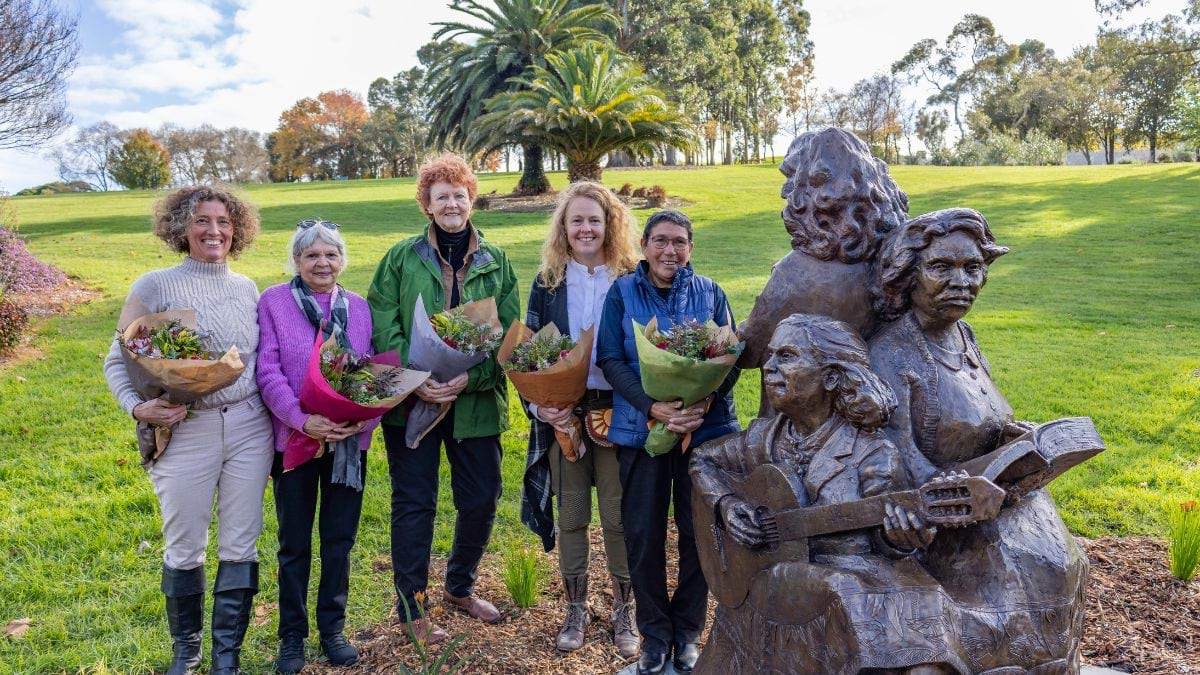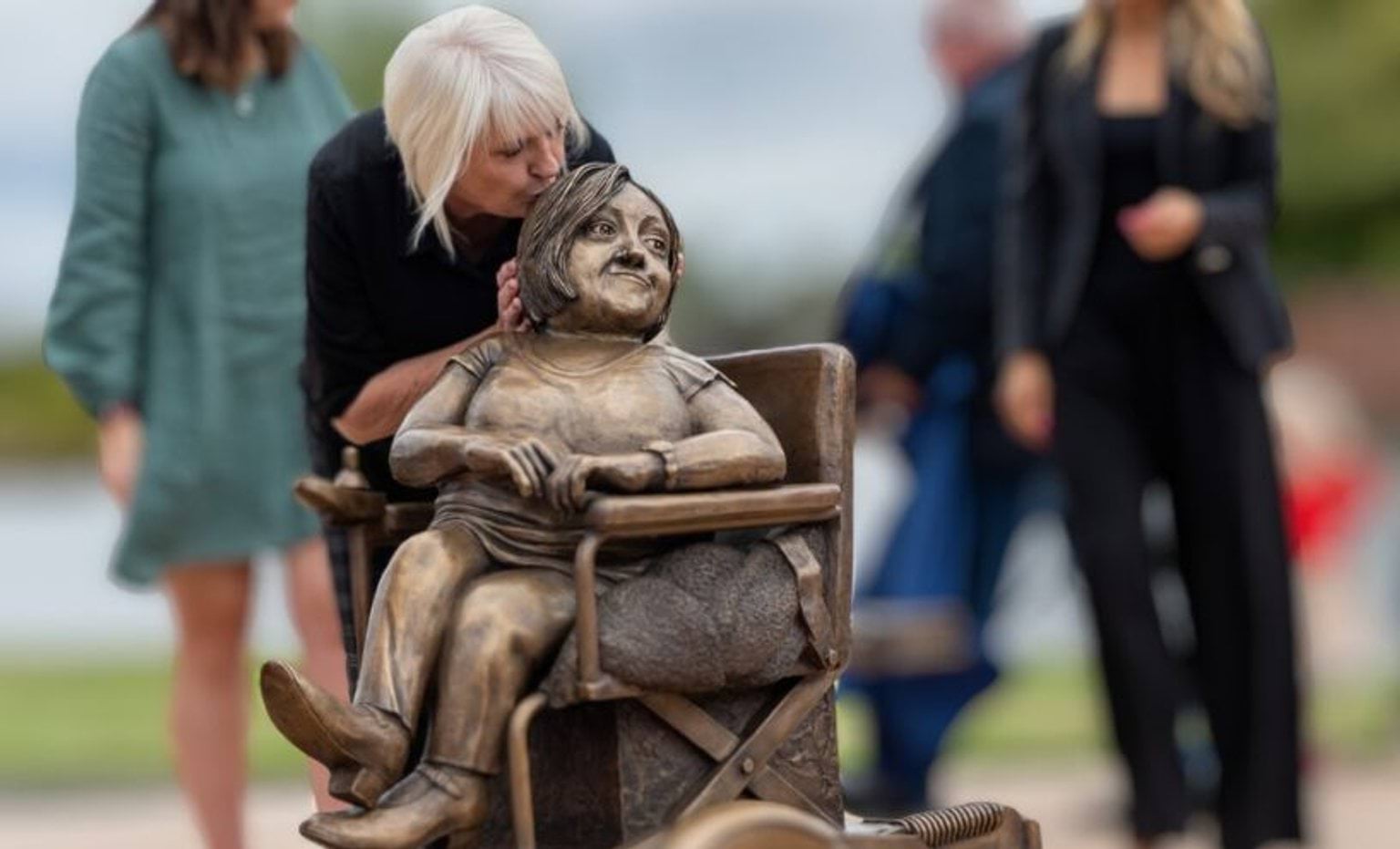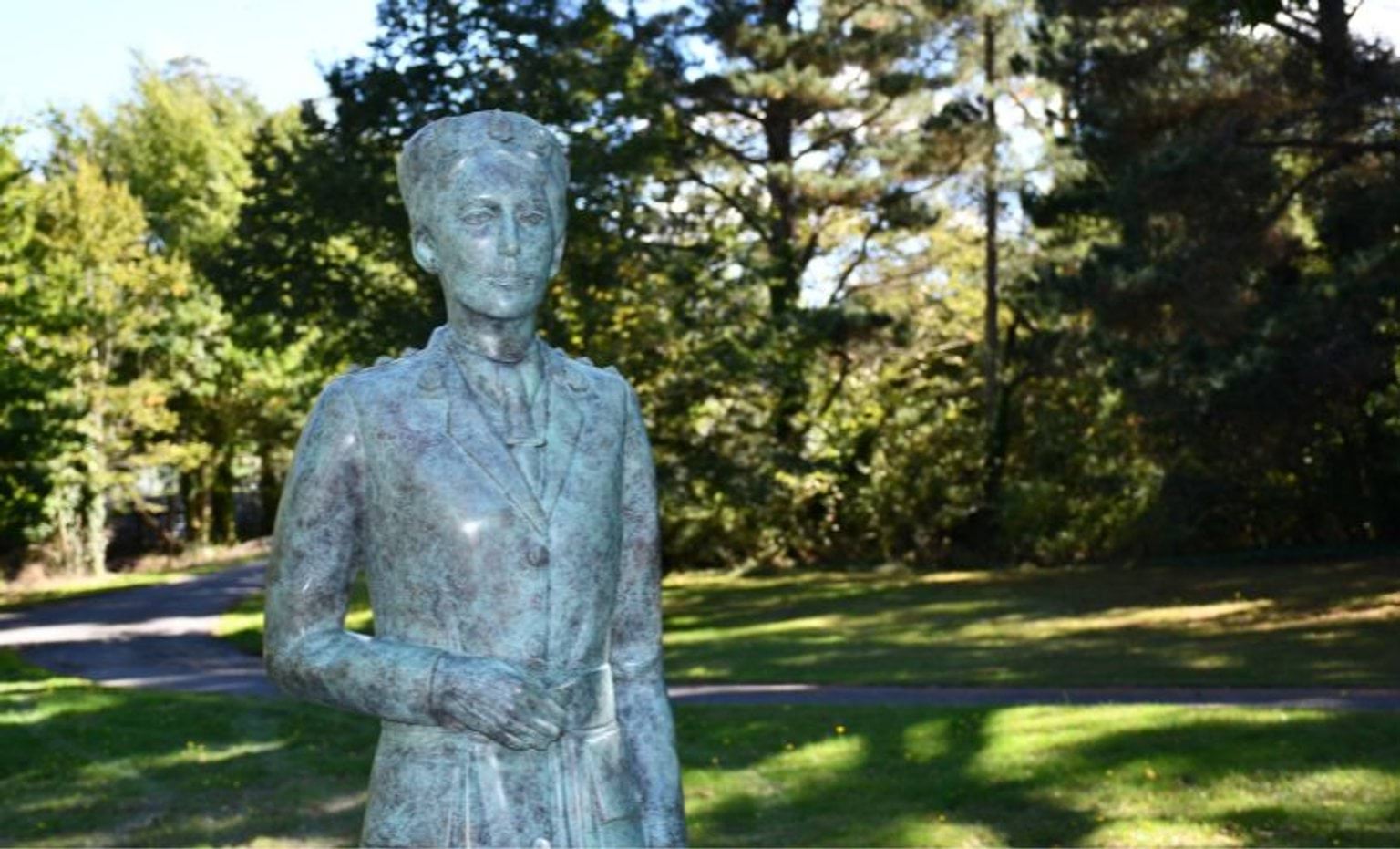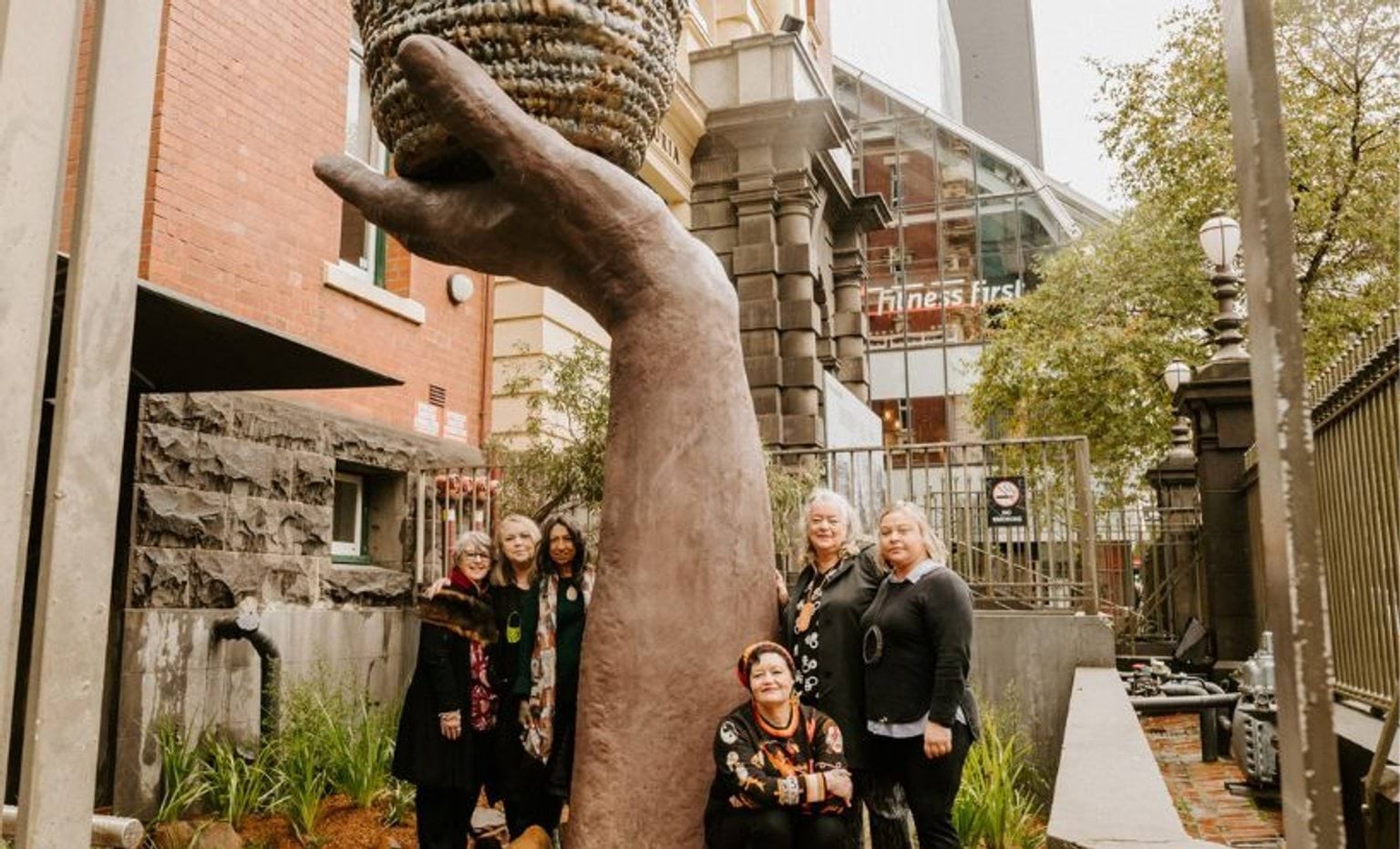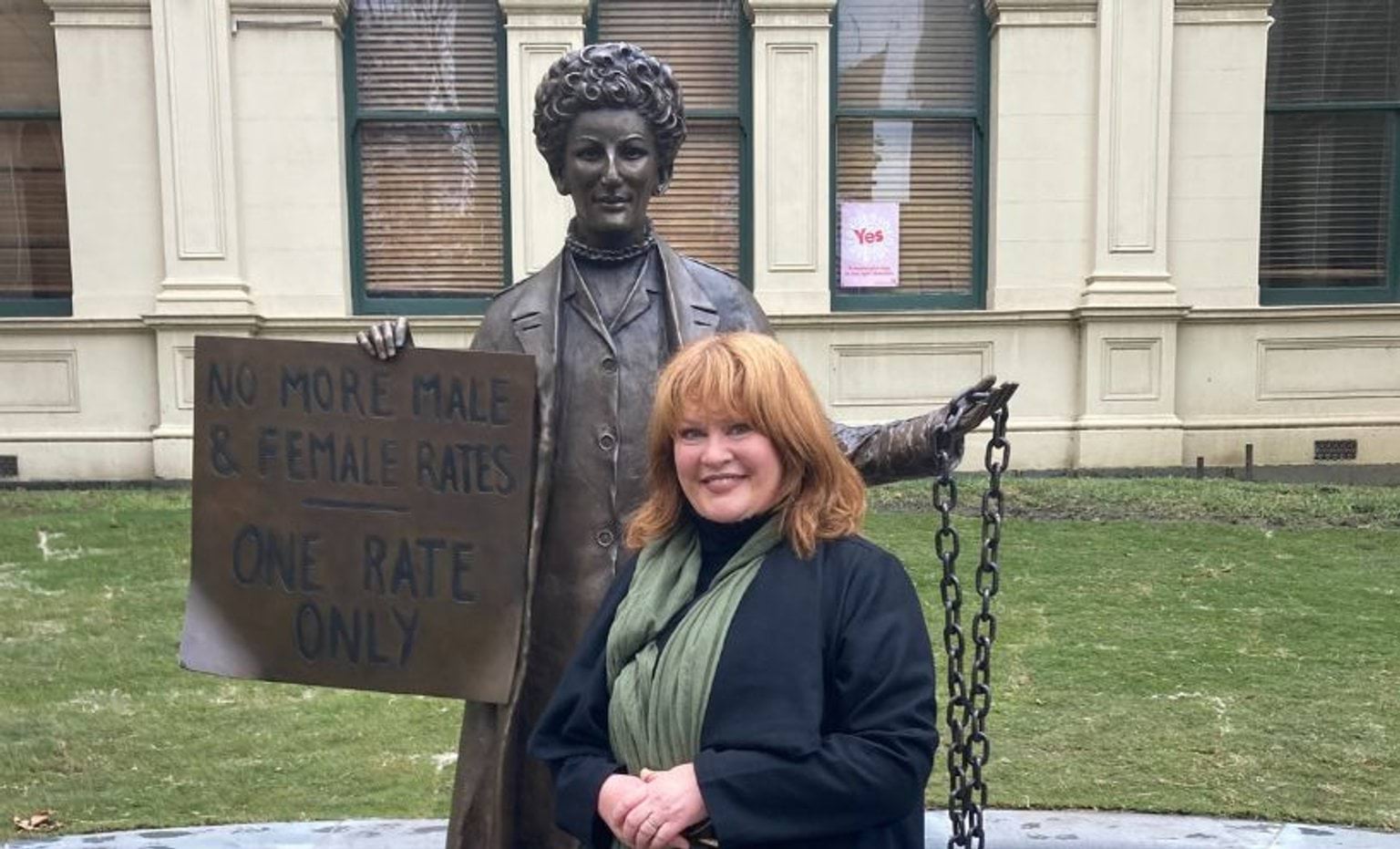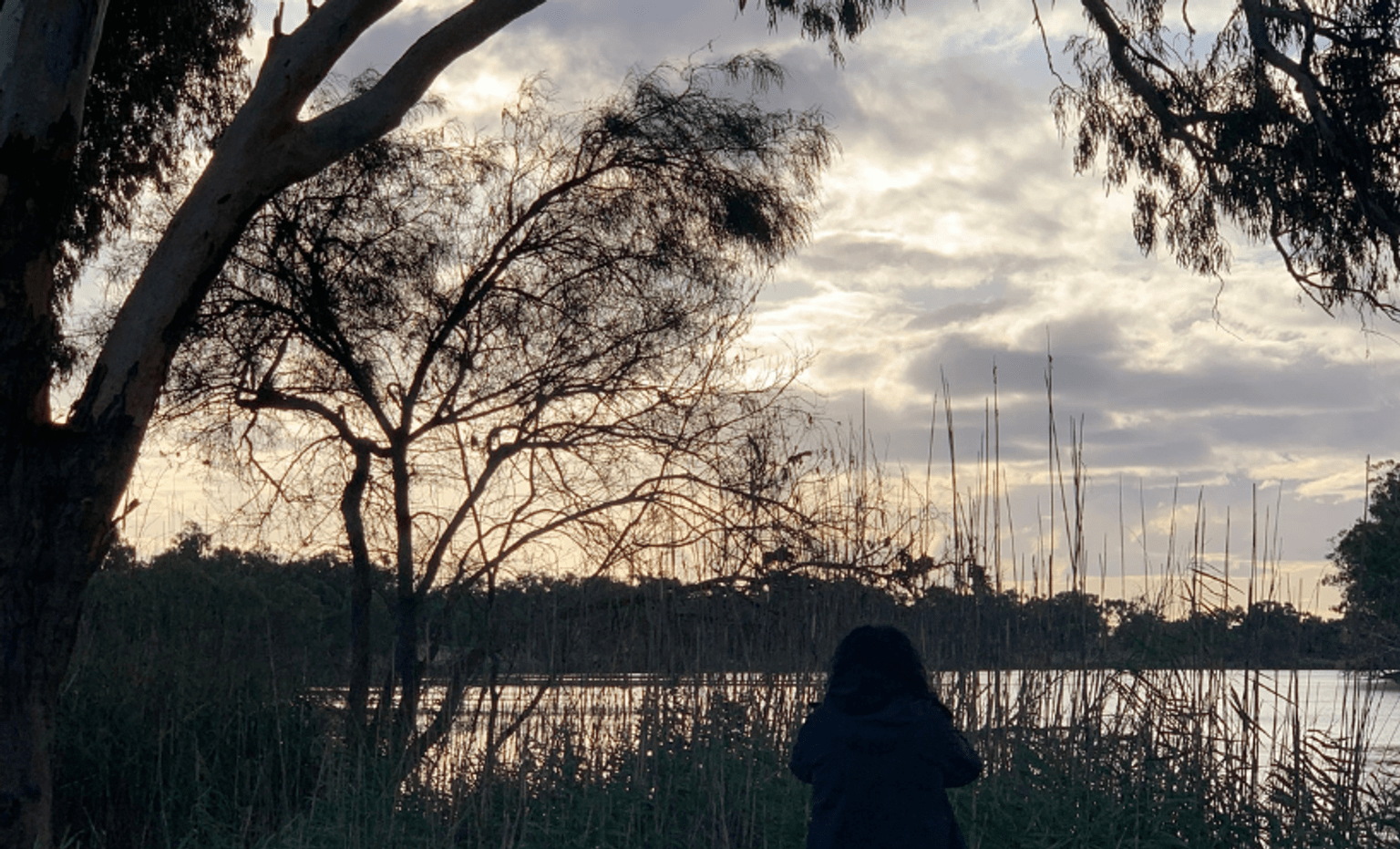Three Kurnai Women on Country is a life-size bronze sculpture of Dorothy Hood, Regina Rose, and Euphemia Mullet Tonkin, who maintained their Kurnai culture in the face of immense change, and the systemic racism and oppression of historic laws and policies.
The artwork depicts their figures intertwined, anchored to country and to each other. Each woman holds an object that symbolises their efforts to keep their families safe.
Regina is playing her guitar, Dorothy holds a book, and Euphemia carries a 44-gallon drum of washing. The guitar pays tribute to the inherent and joyous importance of the arts within the Kurnai community, the book is a symbol of the enforced means of learning that did not respect Kurnai cultural heritage, and the 44-gallon drum has both nostalgic connections to campfires and a fearful reminder that cleanliness was imperative or children would be taken away.
The sculpture – in Drouin’s Civic Park – was created by Jessie McLennan and Rebecca Vandyk-Hamilton who prepared the concept designs, sketches and clay maquettes. Meridian Sculpture foundry in Melbourne then created a full-size 3D model.
Lynette Hayes, Regina Rose’s daughter, created a frieze border for the artwork incorporating Kurnai symbols such as the blue wren, and author Jeannie Haughton produced the verbal and audio aspects which can be accessed via QR code.
The artists collaborated with Kurnai Elder Cheryl Drayton, who selected the objects held by the three women and provided cultural advice and storytelling.
The launch was on the first day of National Reconciliation Week, and its theme of ‘Be a voice for generations’ is embodied by Dorothy, Regina and Euphemia.
Artists: Rebecca Vandyk-Hamilton, Jessie McLennan and Lynette Hayes, with audio by Jeannie Haughton, in collaboration with Kurnai Elder Cheryl Drayton.
Location: Civic Park, Drouin, Baw Baw Shire.
Photo credits: Baw Baw Shire Council.
The Women's Public Art Program complements the Victorian Honour Roll of Women, which celebrates women's outstanding leadership and contributions to life in Victoria.
Follow along on social channels
Share in the stories of inspirational Victorian women via Women Victoria and DFFH’s social media channels.
Women Victoria
- Facebook: @womenvic
- Instagram: @womenvictoria
- Twitter: @womenvictoria
Department of Families, Fairness and Housing
- Facebook: @VicGovDFFH
- Twitter: @VicGovDFFH
- LinkedIn: @VicGovDFFH
Victorian Women's Public Art Program
The Victorian Women's Public Art Program aims to address the underrepresentation of women and their achievements through enduring public artworks.
Updated
